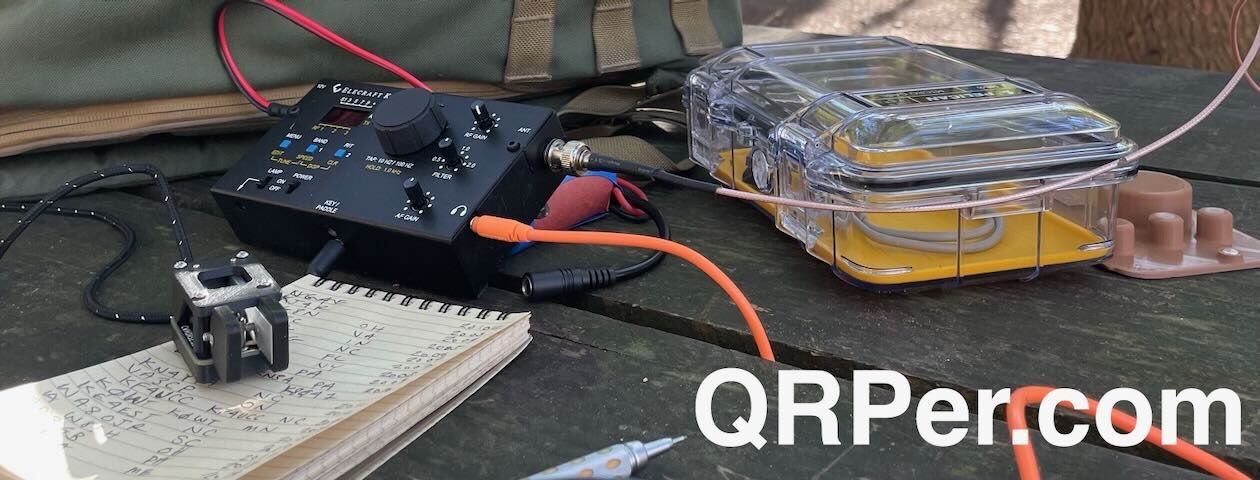On Sunday, August 20, 2023, en route to check in with my parents, I popped by Lake James State Park for a little early evening POTA fun.
In the car, I’d pack the Elecraft KX2 kit and I still had the REZ Ranger 80 vertical antenna system on loan from REZ Antennas (it’s since been returned to them).
 The last time I deployed the REZ was on Mount Mitchell in some pretty sketchy weather. While I recorded a couple of short videos, I didn’t record a full activation video since we were having a family picnic that day.
The last time I deployed the REZ was on Mount Mitchell in some pretty sketchy weather. While I recorded a couple of short videos, I didn’t record a full activation video since we were having a family picnic that day.
Before sending the Ranger 80 back, I wanted to fit in a proper activation showing how I deploy the antenna, how I tuned it for the first time, and how it might perform on the 40 meter band.
Lake James State Park (K-2739)
It was golden hour at Lake James and the park was bustling with activity. There were kids running around, parents chasing them, and several families cooking out at the numerous picnic sites.
I sought out a location that was private and quiet mainly because the Ranger 80 antenna has four 31 foot radials, thus a large footprint; I didn’t want children, pets, or anyone tripping on the ground radials.
Fortunately, one of my favorite spots overlooking the lake was free, so I could simply set the Ranger 80 up in the woods where folks weren’t walking.
The Ranger 80 is super easy to deploy: simply extend the vertical, attach it to the top of the base, then attach the stainless spike to the base and plunge the entire thing into the ground. Next, you deploy the four radials and connect it to the base of the antenna.
It only takes a couple of minutes especially since the counterpoises are wound using the over-under method. I simply tossed each line into the woods and didn’t worry if they were all lying perfectly on the ground.
Note to REZ: Consider offering optional high-visibility counterpoise wires–for those of us setting up in busy parks, it would make the ground radials more conspicuous to passersby.
Next, I needed to tune the Ranger 80 for the forty meter band.
Typically, when I use a sliding-tap tuning coil style antenna like this one, I turn on the radio and move the coil until I hear an audio peak, then I fine tune it by sending a “dit” on the radio, checking the SWR, and adjusting the coil slider.
That evening, though, I had my RigExpert AA-35 Zoom antenna analyzer so I set it to continuous SWR monitoring and adjusted the coil until I achieved a good match. Easy.
I should add here that when you use an antenna like this frequently, you learn where the best tap points are on the coil thus tuning becomes easier. My friend Alan (W2AEW) actually made a PVC rig for his coil antenna (click here to check it out).
 With the antenna all set up and ready to rock-and-roll, I simply hooked up the Elecraft KX2, my VK3IL pressure paddles, and prepared the logs.
With the antenna all set up and ready to rock-and-roll, I simply hooked up the Elecraft KX2, my VK3IL pressure paddles, and prepared the logs.
It was time to play radio! Continue reading Golden Hour QRP POTA Activation with the REZ Ranger 80 Portable Vertical Antenna






























































